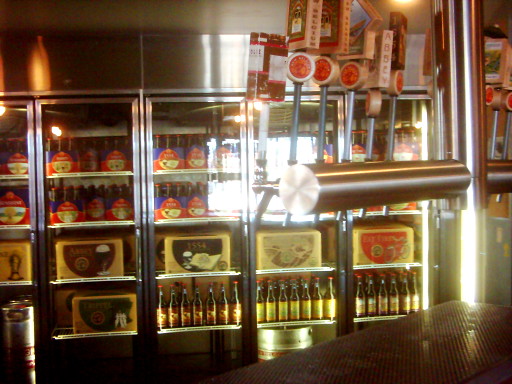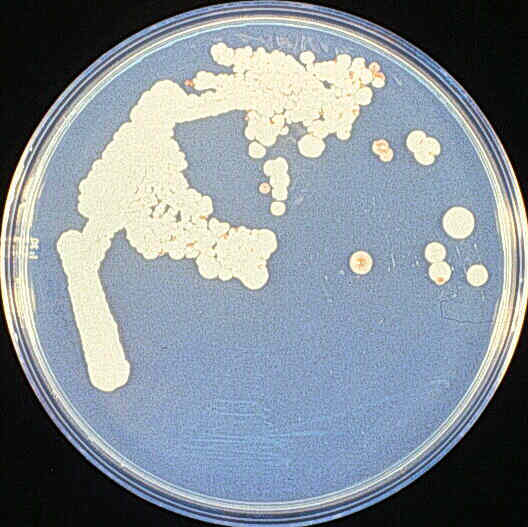What does gluconic acid taste like, anyway?
 Well, that was an interesting reminder. I’m tracking “fermentation” on Twitter, and caught a random reference to an interesting fermented beverage being made in Germany. The “reminder” I drew from this serendipitous reference was that “fermentation” doesn’t necessarily mean alcoholic fermentation.
Well, that was an interesting reminder. I’m tracking “fermentation” on Twitter, and caught a random reference to an interesting fermented beverage being made in Germany. The “reminder” I drew from this serendipitous reference was that “fermentation” doesn’t necessarily mean alcoholic fermentation.
“Fermentation” seems to be slightly tricky to define accurately. Most definitions seem to directly mention alcohol production from sugar, but this is only an example and not a definition. I’ve also seen the term used to mean simply “to grow a culture of microorganisms” (because the tank they are grown in can be referred to as a “fermentor”.)
Properly speaking, fermentation is what you get when you have microbes growing under conditions where the elelectrons that get sucked away from “food” molecules like sugars ends up on another, simpler carbon compound rather than something like oxygen, and therefore fermentation is implicitly anaerobic although that’s not the same as saying that fermentation cannot happen in the presence of oxygen (e.g. the Crabtree Effect, and of course fermentation of ethanol to vinegar requires oxygen). The end product is generally assumed to be organic acids (like acetic acid [vinegar]) or alcohols, and carbon dioxide. So, making beer and wine is fermentation. Making vinegar is fermentation. Making yogurt (lactic acid) is fermentation. Citric acid can be made by fermentation of glucose by Aspergillus molds, as can malic (apple) acid (see US Pat#3063910). You can make tartaric (grape) acid from glucose by fermentation as well (see US Pat#2314831).
I am familiar with the flavors of all of those products. One I’ve never directly tasted is gluconic acid, which is the main product of the fermentation process used to make “BIONADE®” (it seems to be written in all-caps everywhere).
According to their English-language page discussing their process – linked from the image at right, click to view – they are starting with malt, just as one would for beer, but instead of Saccharomyces yeasts, they are fermenting this wort-like liquid with “acid bacteria”. I’m going to hazard a guess that the bacterium in question is a strain of Gluconobacter oxydans or one of its close relatives. This group of bacteria is in the Acetobacteraceae family of bacteria which is involved in turning your wine into vinegar. It would appear that under the right conditions, the enzyme Glucose Oxidase (EC 1.1.3.4) produced by G.oxydans converts glucose to a compound which reacts with water to form gluconic acid. BIONADE® then adds flavor extracts and juices to the filtered fermentation product, carbonates it, and bottles it.
Not being familiar with the flavor of gluconic acid, I’m aching to get my hands on some of this stuff and try it.
For another example of a relatively non-alcoholic fermented beverage, see also Kombucha, which is essentially sweetened tea fermented by acetic-acid bacteria and non-Saccharomyces yeasts…which I also have yet to taste.
geostr:50.4600,10.2208:200804110105-06:geostr (at least if Google Maps interpretation of the address I could find at the moment is correct, and assuming the information I dug up and my interpretation of it is correct, this should be the approximate location of the brewery responsible for BIONADE® production.)
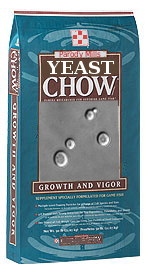
 Microbiology is the dominating topic of this particular blog, but I don’t think I’ve ever addressed what I consider to really count as “micro”biology. This isn’t necessarily an obvious topic. My old “Microbiology” book from 8 years ago, plus the textbook from last year’s “Pathogenic Microbiology” class both contained large sections discussing organisms that are visible without a microscope. Heck, the “Pathogenic Microbiology” text even had a whole section on spider and insect bites. And, tapeworms? Since when is “over 30 feet long” considered “micro”? As I like to say: It’s time for Microbiology to grow up and move out of Medicine’s basement.
Microbiology is the dominating topic of this particular blog, but I don’t think I’ve ever addressed what I consider to really count as “micro”biology. This isn’t necessarily an obvious topic. My old “Microbiology” book from 8 years ago, plus the textbook from last year’s “Pathogenic Microbiology” class both contained large sections discussing organisms that are visible without a microscope. Heck, the “Pathogenic Microbiology” text even had a whole section on spider and insect bites. And, tapeworms? Since when is “over 30 feet long” considered “micro”? As I like to say: It’s time for Microbiology to grow up and move out of Medicine’s basement.![Cover of the Wine Microbiology book [via gohastings.com] Front Cover of the book](http://www.athastings.com/internet/images/CoverArt/muze/books/large/9780387333410.jpg) I ran into this as I was reading through my shiny new
I ran into this as I was reading through my shiny new 
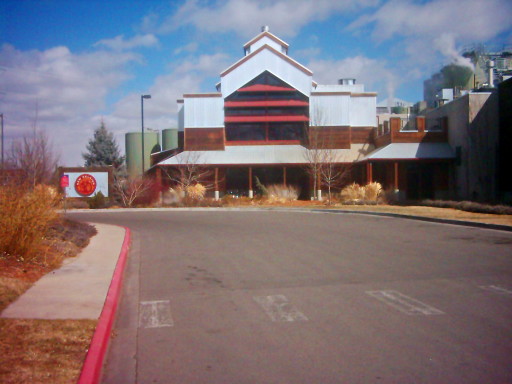
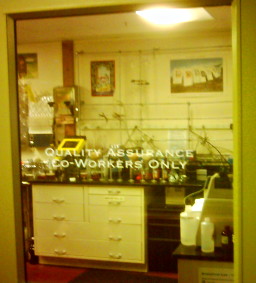 Incidentally, did you know it’s a long way from southeastern Idaho to southeastern Texas? I made the drive last week, and I’ll be making the drive back as soon as I can get some things FINALLY done around here. On the upside, it’s kind of a fun, if long, drive other than Wyoming’s tendency towards having ridiculously high winds and roads paved with what appears to be a mixture of wet ice and motor oil. I made it down here though, but I’ve already been delayed about a week due to some issues getting inspection arranged on the home we’re trying to buy out here. But you didn’t come here to read me whining about that, did you?
Incidentally, did you know it’s a long way from southeastern Idaho to southeastern Texas? I made the drive last week, and I’ll be making the drive back as soon as I can get some things FINALLY done around here. On the upside, it’s kind of a fun, if long, drive other than Wyoming’s tendency towards having ridiculously high winds and roads paved with what appears to be a mixture of wet ice and motor oil. I made it down here though, but I’ve already been delayed about a week due to some issues getting inspection arranged on the home we’re trying to buy out here. But you didn’t come here to read me whining about that, did you?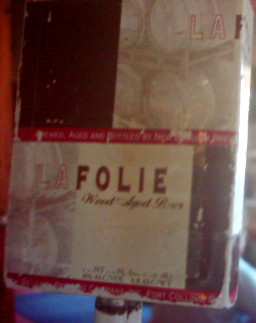 If you’re familiar with them at all, it’s probably for their “Fat Tire” amber ale which I have seen in stores around the country, but I didn’t care about that. What I cared about is that they actually let their microbiologist (and, it turns out, their other employees too) play, and they have experimental “sour” beers in the same general style as Belgian lambics. Pictured at left is their famous one – “
If you’re familiar with them at all, it’s probably for their “Fat Tire” amber ale which I have seen in stores around the country, but I didn’t care about that. What I cared about is that they actually let their microbiologist (and, it turns out, their other employees too) play, and they have experimental “sour” beers in the same general style as Belgian lambics. Pictured at left is their famous one – “
